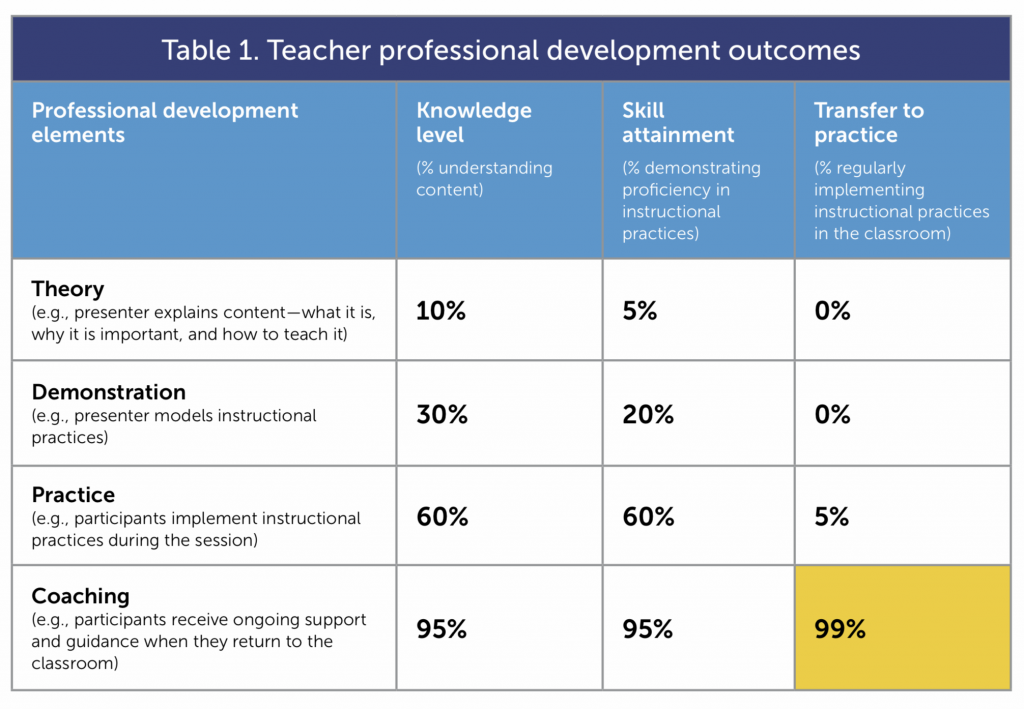ISTE Standards for Coaches 6c, “Partner with educators to empower students to use learning data to set their own goals and measure their progress,” provides direction for collaborating directly with educators to empower implementation of learning data once that data has been effectively obtained and analyzed.

Source: EDTC 6106 Program Evaluation Project, Seattle Pacific University
Evidence: “What: Analysis and learned insights include possible improvements to be made by the professional learning design team, with the following serving as the primary examples: improved and increased breakout group experiences, reduction in content and corresponding adjustments in pacing, and streamlining of participant user experience with respect to technology usage and integration.”
Evidence: “The most immediate next steps are for this research to be shared with the design team so that they can immediately implement changes into the professional learning design. Additionally, continuing to look for and identify patterns and possible takeaways based on the data results and comparisons of responses across the open-ended qualitative data will be in order. So far, each review brings new insights, answers pre-existing questions, and brings new questions to consider as well.”
Evidence: “The 2021 data, once collected, will also be of particular interest since changes to the training were made based on the 2020 data results. A lot of additional improvements have been made as well so identifying correlation versus causation may take some additional analysis and may not be completely possible but the process will offer significant insight. All future research will benefit from lessons learned while conducting this research project.”
Explanation: Whether working with students or adult educators, partnering with facilitating educators helps empower them to implement changes based on learning data such as adapting the level of content and technology usage to match their learners’ needs. This can be done based on lessons learned from gathered data as well as continued and expanded collaboration with educators to procure and evaluate new data in order to extend lessons learned and develop new levels of understanding with regard to the effective use and application of learning data in goal setting, progress measuring, classroom instruction, and more.

